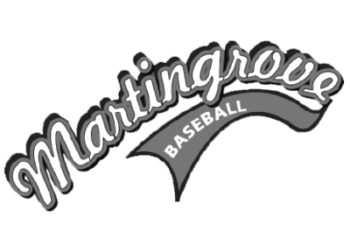Assisting Your Young, Befuddled Baseball Player
As your season moves along, most of your players will learn new skills, make improvements, and have a lot of fun. However, some of your kids may not develop a comfort level with certain basics of the game, such as swinging the bat or sliding into a base. One of the real challenges of coaching a youth baseball team is not only recognizing that your players develop at vastly different rates, but also being prepared to help them overcome their difficulties so they don’t feel disappointed and inadequate .
How you handle struggling kids, and the progress you make with them, is a true indicator of your coaching ability.
ANALYZING PROBLEMS
If you notice that certain players are having trouble picking up a skill, your job is to figure out a way to help them improve. Begin by taking a closer look at how you interact with the kids. Maybe you spend too much time talking and don’t giving them enough time to practice the skill. Perhaps you fill their heads with too many thoughts about what to do instead of keeping your instructions really simple. If you’re getting maximum effort out of the kids, and you know that they genuinely want to learn and improve, chances are good that you can trace the central problem to how you’re teaching them.
Try out these tips to help your youngsters get back on the right track:
- Move kids around. Perhaps a child who’s struggling really wants to play the outfield, for example, but you have him playing third base instead. Try mixing things up. Sometimes, all it takes is a new position to spark a youngster’s enthusiasm. As an added benefit, teaching your kids many different positions, and the skills that go with them, ensures that they’ll be well-rounded players. Instead, find creative ways to help them without shining the spotlight on their difficulties. If a child is having problems catching fly balls high in the air, you can make adjustments during a drill that will go unnoticed by other players while helping this child in the process. For example, every time you hit a ball to this outfielder, don’t put it up in the air quite as high as you do for the other players. After the youngster gets comfortable making these catches on shorter fly balls, he’ll have a little more confidence to tackle those balls hit higher in the sky.
- Never make a child feel bad. If a youngster is struggling with some aspect of the game, don’t add to his misery by embarrassing him or making him feel inferior to his teammates. Most children know exactly where they stand in comparison to the other kids on the team, so they don’t need you to highlight their deficiencies (by calling them out for extra work on the sidelines, for example).
- Maintain an even tone. Don’t allow the tone of your voice to divulge any frustration or disappointment you may be feeling. Keep that in mind with your body language, too. Patience and composure are invaluable when helping a child work through any difficulties he may have.
- Stick by them. Never turn your back on a youngster or give up hope just because he isn’t picking up the game as fast as others. You have to stick by your kids, encouraging and applauding their efforts every step of the way. Struggling kids need you now more than ever. Who knows, years from now you may see a child who’s still involved with the sport because of the efforts you made to help him out. What a good feeling! You never want your focus to stray from making sure that every child is learning and developing. Losing track of some kids and overlooking their problems can happen easily if your season is going great and the team is playing well together. Don’t let wins blind you to the problems of certain players.
RECOGNIZING PHYSICAL ISSUES
How much progress a child makes in a sport may be dictated, to a certain degree, by a pre-existing condition he has. All sorts of ailments or disorders can affect children involved in sports. One of the more common disorders is Attention Deficit Hyperactivity Disorder (AD/HD). A child’s lack of focus may be the result of AD/HD. Some of the most common characteristics of AD/HD are:
- Distractibility and poorly sustained attention to tasks
- Impaired impulse control
- Excessive activity and physical restlessnessIf you think a player on your team may be displaying signs of AD/HD, talk to his parents about your observations. Or, if you know that a child has AD/HD, work with the parents and child to find ways to ensure that he has a rewarding experience on your team.Past injuries also can affect a child’s development. For example, a youngster who suffered a broken leg a year or two ago may be limited in how he can perform a bent-leg slide. With knowledge of his condition, you can teach the child to perform a head-first slide instead.

